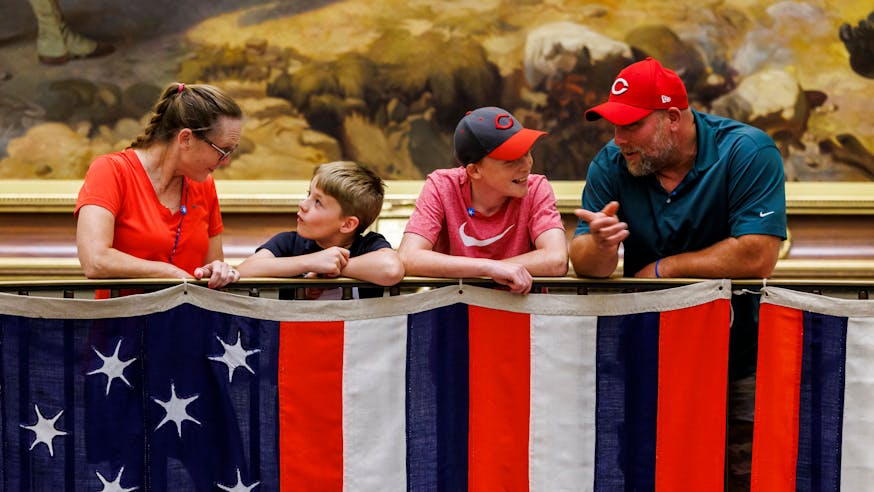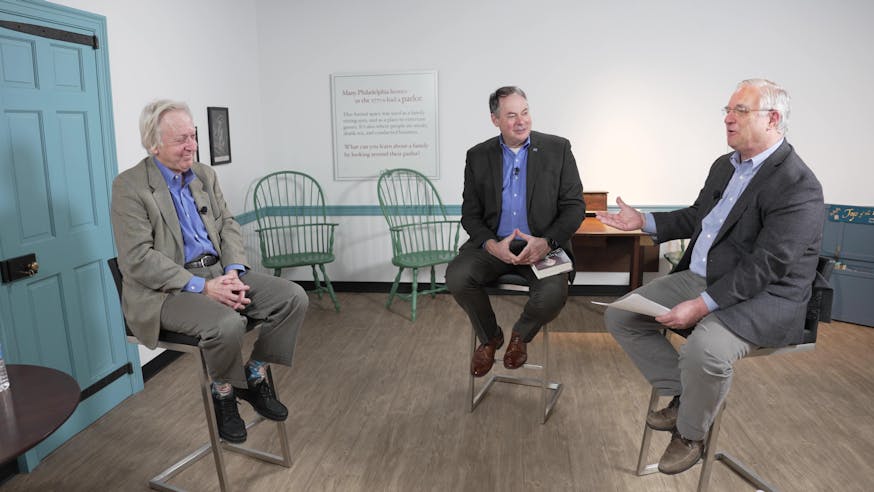John Adams and Revolutionary Philadelphia's Summer Heat

Ah, Philadelphia in the summertime.
The sounds of children laughing as they run through the fountains at Dilworth Park. The wafting smells of different foods from various outdoor festivals and patrons dining al fresco throughout the city — or of sewage and hot garbage depending on the day. And of course, the humidity that stills the air and sometimes makes you feel like you put on a heavy sweater as soon as you walk outside.
While now we have the luxury of being able to head “down the shore” to escape the heat of the city, a majority of Philadelphians in the Revolutionary era didn’t have the same opportunity. And some handled the heat better than others. One person who did not take kindly to the rising temperatures of the summer was John Adams, who frequently wrote of his distaste for the season.
Here are five times Adams, signer of the Declaration of Independence and eventually the second President of the United States, was the most relatable — and maybe just a little dramatic — in writing about his hatred for the heat during the summers of 1776 and 1777.
Yet I dread the melting Heats of a Philadelphia Summer…John Adams, May 1776
Even in the earliest days of summer, Adams was dreading the heat to come. On May 27, 1776 he wrote to his wife and primary recipient of these letters, Abigail Adams:
“The Affairs of America, are in so critical a State, such great Events are struggling for Birth, that I must not quit this station at this Time. Yet I dread the melting Heats of a Philadelphia Summer, and know not how my frail Constitution will endure it. Such constant Care, such incessant Application of Mind, drinking up and exhausting the finer Spirits upon which Life and Health so essentially depend, will wear away a stronger Man than I am.—Yet I will not shrink from this Danger or this Toil. While my Health shall be such that I can discharge in any tolerable manner, the Duties of this important Post, I will not desert it.”
Read the full letter.
So severe a Spell of Heat has scarcely been known these twenty Years.John Adams, August 1777
In lamenting about the sweltering days of August in Philadelphia, he wrote to Abigail on Aug. 13, 1777:
“We have been sweltering here, for a great Number of days together, under the scalding Wrath of the Dog Star. So severe a Spell of Heat has scarcely been known these twenty Years. The Air of the City has been like the fierce Breath of an hot oven. Every Body has been running to the Pumps all day long. There has been no finding a Place of Comfort—the shade, and the very Entrys of Houses where they have the best Draughts of Air, have been scarcely tolerable. This season always affects me, deeply. It exhausts my Spirits, and takes away all my Strength of Mind and Body. I have never lived here in Dog days, without becoming so enfeebled, and irritated, as to be unable to sleep soundly and regularly and to be still more reduced by Night Sweats. If I can avoid these Inconveniences, this year, I shall be happy. But I have experienced something of it, already, altho not in any great Degree.
“When the Weather is so extream, the Fatigue of even holding a Pen to write a Letter, is distressing.”
Read the full letter.
How we shall live through these Heats I dont know.John Adams, August 1777
The weather did not let up. The next day on Aug. 14, 1777, he wrote:
“We are still parching under the fierce Heats of Dog days. It is agreed, by most People, that so long and so intense a Heat has scarcely been known. The Day before Yesterday, Dr. Ewing an eminent Philosopher as well as Mathematician, and Divine told me, the Spirit in his Glass, was at 91 in his cool Room, and from thence he concludes that it was above an hundred abroad in the Shade, because he says it is generally ten degrees lower, in his cool Room, than it is in the Shade out of Doors. Yesterday, it was at 94, abroad in the Shade. He placed his Thermometer, against a Post which had been heated by the Sun, and the Spirit arose to an 100, but removing it to another Place, and suspending it at a distance from any warm Object and the Spirit subsided and settled at 94.—How we shall live through these Heats I dont know…”
Read the full letter.
…been worse for me to bear than were ever the extreamest heats of Philadelphia.John Adams, July 1783
Adams’ scorn for the heat even crossed oceans. In July 1783, he wrote to Abigail from Paris:
“We have had for a Fortnight or Three Weeks a Succession of Hot Weather, attended with an unusual Fog, that has been worse for me to bear than were ever the extreamest heats of Philadelphia. My Scorbutic Habit is very ill fitted to bear it.”
Read the full letter.
I think upon the whole I have thro it.John Adams, September 1777
As with every year, the melting summer turned into fall and John Adams made it through another hot season. In September 1777, he wrote:
“We have now run through the Summer, and altho the Weather is still warm, the fiercest of the Heats is over. And altho the extream Intemperance of the late Season has weakened and exhausted me, much, yet I think upon the whole I have got thro it, as well as upon any former Occasion.”
Read the full letter.
Learn More

A Revolutionary Summer

Founders' Writings on Their Admiration of William Shakespeare
